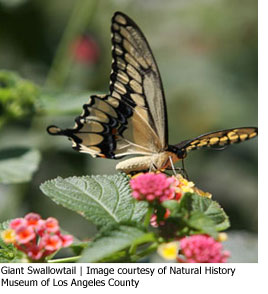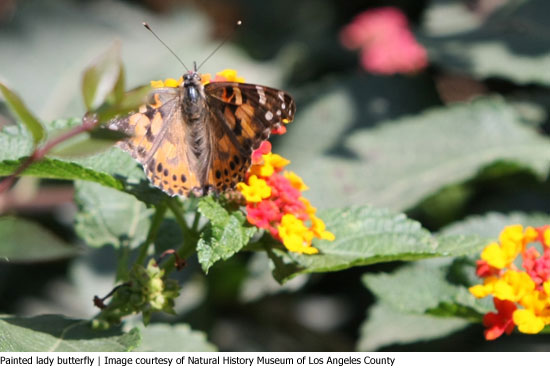A show of wings at L.A. museum
April 1, 2010
The California Dogface is getting ready for its close up. So are the Mourning Cloaks, Giant Swallowtails and Red Admirals.
A cast of hundreds of moths and butterflies are about to alight, oh so delicately, at L.A. County’s Natural History Museum when the annual Pavilion of Wings opens April 11. More than 40 different species will star in the 5-month show, held in a giant tent on the museum’s south lawn.
Last year’s exhibition attracted more than 65,000 visitors during its run. Tickets cost $3 for adults, $2 for seniors and students and $1 for children ages 5-12. Visitors under 5 are admitted for free.
For organizers, there’s no winging this kind of show, says museum entomologist Brent “the Bug Guy” Karner, the exhibit’s impresario for the past 10 years. He says it takes months of intricate planning, including a lot of overnight shipments and preparation for the show’s final act—the appearance of hundreds of ravenous spiders.
Logistics for this one started in January, when Karner and his crew of naturalists placed orders from “butterfly farms” in Texas, Florida and California. The farms attract butterflies and moths by planting flowers, shrubs and trees on which the various species lay eggs. Farmers then nurse them through the early stages of life: egg, caterpillar and chrysalis, which is the immobile, hard-coated pupa stage before adulthood.
 Beginning this week, boxes of chrysalises will begin arriving in overnight deliveries. Karner’s entomologists will carefully place the chrysalises in mesh cages indoors until they metamorphose into adults and are ready to be transferred to the tent, filled with dozens of plants and flowers that attract the flying beauties.
Beginning this week, boxes of chrysalises will begin arriving in overnight deliveries. Karner’s entomologists will carefully place the chrysalises in mesh cages indoors until they metamorphose into adults and are ready to be transferred to the tent, filled with dozens of plants and flowers that attract the flying beauties.
Because moths and butterflies don’t survive long as adults—most die after 3 to 4 weeks—Karner keeps weekly shipments coming throughout the show’s run, ending in September.
To ensure a big opening day crowd, he also orders shipments of live adults, which are sealed in envelopes packed inside boxes. “So long as you send them overnight,” Karner says, “they’ll all be fine on our end.”
All of the species are from the U.S., with about half native to California. The California dogface, so called because of a white mark on its wings that looks like a canine’s mug, is the official state insect. Among this year’s newbies is the Small Postman, a tropical pollen-eating butterfly from south Texas. Karner says he’s also increased the quotient of moths, which he believes deserve equal billing. “Butterflies are just day-flying moths,” Karner sniffs. They include Hawk moths, who hover and dart like birds of prey.
Karner and the museum staff use the moths and butterflies to teach about insect evolution and to explore the relationships between insects and the plants they eat as caterpillars and use as breeding grounds. “Those lessons make the experience at our butterfly pavilion much deeper than most others,” he says. “It’s pretty darned cool.”
Come September, one last drama of nature will unfold in the tent and out of public view as the fall spider show prepares to move in. The winged stars quickly become arachnid lunch. “The spiders take care of all my butterflies,” says Karner. “Unfortunately, people don’t get to see the massive onslaught.”
Maybe that’s just as well.
Posted 4-01-10
















 405 bridge work causes a stink
405 bridge work causes a stink